Powered by a new breed of technology
For my first long-form post, I'm pleased to start by quoting our project manager, Elias Michelioudakis (@elias.mic), a Senior PM with 25 years of experience:
"This is the first project I know of in the Commission which has delivered more than expected, faster than the schedule and for less money than agreed"
Background
The European Financial Transparency Gateway (EFTG: https://eftg.eu ) is a pilot project at the initiative of the Directorate General FISMA of the European Commission, with funding from the European Parliament, and with the objective of furthering the Capital Markets Union by increasing financial transparency and facilitating investor access to regulated financial information, in line with the Transparency Directive (Directive 2013/50/EU) and the EEAP regulation (Commission Delegated Regulation 2016/1437).
DG FISMA, supported by the Directorate General CONNECT, decided that blockchain technology could bring distinct benefits and help address specific challenges facing this initiative, especially by clarifying concerns related to data control, liability and access rights.
Unlike classical IT architectures, a blockchain-based solution was expected to provide and maintain a secure, reliable link between data and actors in the system while being cheaper and faster to develop and deploy than a custom-built system.

Figure 1. Landing page https://eftg.eu
What has blockchain technology brought to EFTG?
Efficiency
First and foremost, as indicated in the quote at the top of this paper, the EFTG pilot has benefited from the particular ethos surrounding blockchain. Much more than a new technology "blockchain", means increased freedom and informal collaboration that takes "open source software development" to the next level, enabling a consortium with a shared interest to remain in control.
Open source software (OSS) has a major impact on software development all over the world but many people reckon its impact could and should be even bigger. Despite structurally lower costs (development is done for free), one thing that was holding OSS back was the absence of a codified, quasi-contractual gateway between the OSS communities of developers and the businesses wanting to benefit from their efforts.
Select blockchain technologies are today able to provide that quasi-contractual relationship which allows OSS to enter professionally managed software development processes. With the right blockchain as a platform for open commitments, the OSS community can pledge to deliver a specific piece of software by a certain date with a very robust level of confidence, for a fraction of the usual costs!
We selected steem because it is free, open source, and user-centric with an energy-efficient "Delegated Proof of Stake" (DPoS) consensus mechanism.
One of the reasons for the EFTG pilot being developed so cheaply is the outstanding voluntary contribution of the steem blockchain OSS community, voluntarily organized by a European start-up of a new breed, Utopian.io (@utopian-io).
What's more, Utopian.io services have costed Europe nothing! They were not paid from the project budget, but from the steem blockchain's "reward pool"!
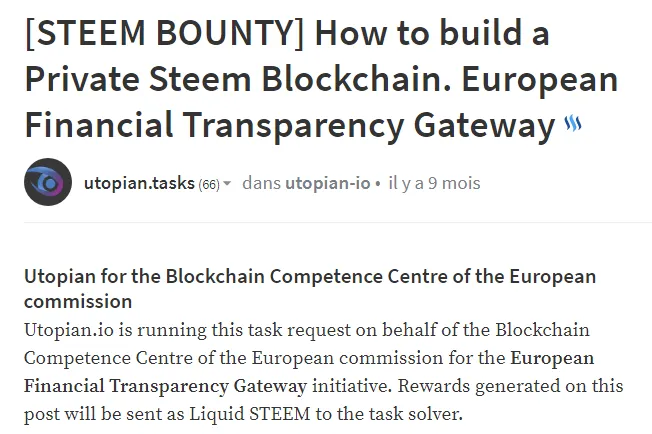
Figure 2. The Utopian.io community has contributed custom code to EFTG. Contributors have been rewarded by the unique "Proof of Brain" mechanism of the steem blockchain.
Thus, before we even consider other specific benefits of using blockchain, and regardless of what one thinks about immutability (or any other touted advantage of blockchain), one has to acknowledge that this technology allows projects to develop more, faster, cheaper!
Data control
The main "bone of contention" that hindered the Commission transparency initiatives in the past was the issue of data control. "Data is the new oil", it has been said. Financial data gathering, aggregation and timely dissemination is the basis of business empires such as Bloomberg and Thomson Reuters.
Blockchain systems are by design jointly-owned IT systems. Unlike classical IT systems which have one entity as owner, blockchain systems are owned by a consortium (or "cooperative").
The EFTG pilot addresses this major concern in a convincing manner. The EFTG pilot started as fully owned by DG FISMA and is gradually sharing ownership with consortium participants, National Officially Appointed Mechanisms (OAMs). Several OAMs have uploaded real financial data into a system over which none of them has sole control and ownership.
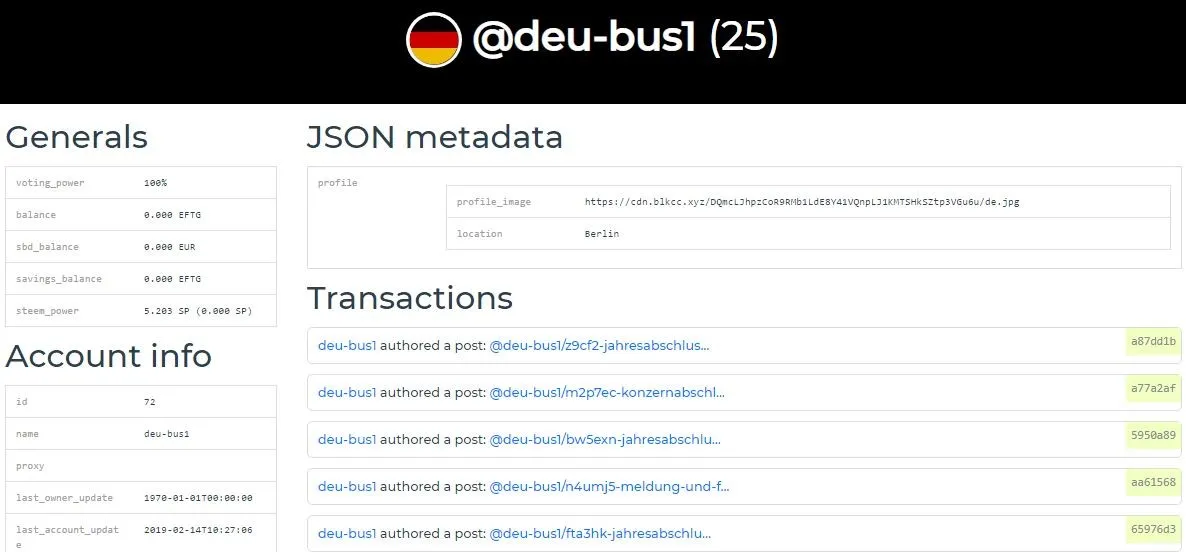
Figure 3. The German OAM (Unternehmenstegister) has assumed joint ownership of the system and uploaded real financial data.
The blockchain technology, thanks to unforgeable cryptographic signatures, vouches credibly that they will not lose control over their data.
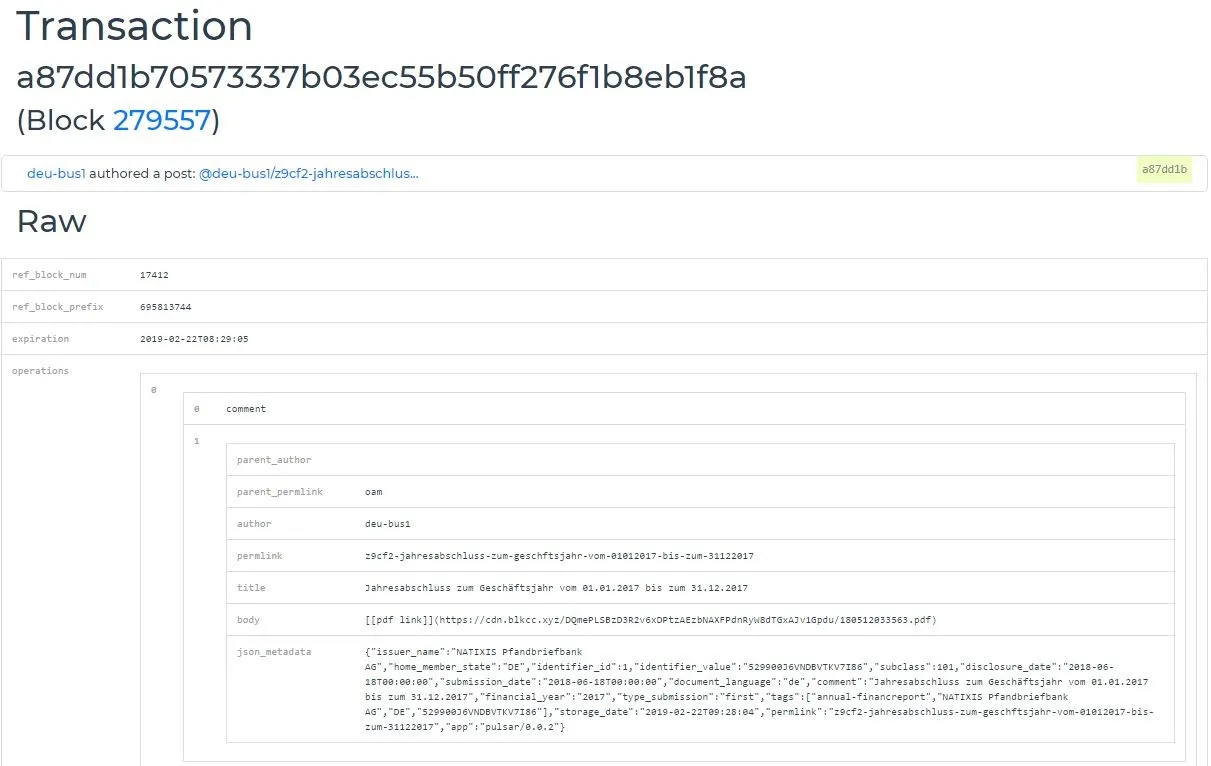
Figure 4. The blockchain value proposition is safeguarding data ownership through cryptographic signatures
Resilience
Blockchain-based information system architecture entails a big (25+) and variable number of copies of the system ("nodes") running in different locations, on different hardware infrastructure, under supervision of different entities. Any number of entities can participate by running the software and joining the network consensus. The blockchain synchronizes the copies and ensures that they are all in the same state.
Unlike a classical information system, there is no single point of failure in a blockchain architecture. Any machine can dysfunction or fail, any network connection can be lost, any individual software instance can experience a fatal error, for as long as enough copies continue to be online for consensus to be achieved (currently 21 instances), the users will not suffer any interruption of service.
Resilience needs to be "bolted on" with great effort in classical IT architectures, by using costly techniques such as "high availability", "load balancing", and real-time monitoring. By contrast, blockchain software is "resilient by design". However, it still needs to be operated using good practice.
Our pilot has begun as a "blockchain-system-in-transition" where all the nodes were controlled by a single entity, the DG DIGIT of the European Commission (see yellow dots in Figure 1 above). This is usually referred to as "blockchain in name only". However, the great success of the EFTG pilot was to achieve real geographic distribution, infrastructure diversity and redundant, independent monitoring, thus enacting the promise of "resilience by design".
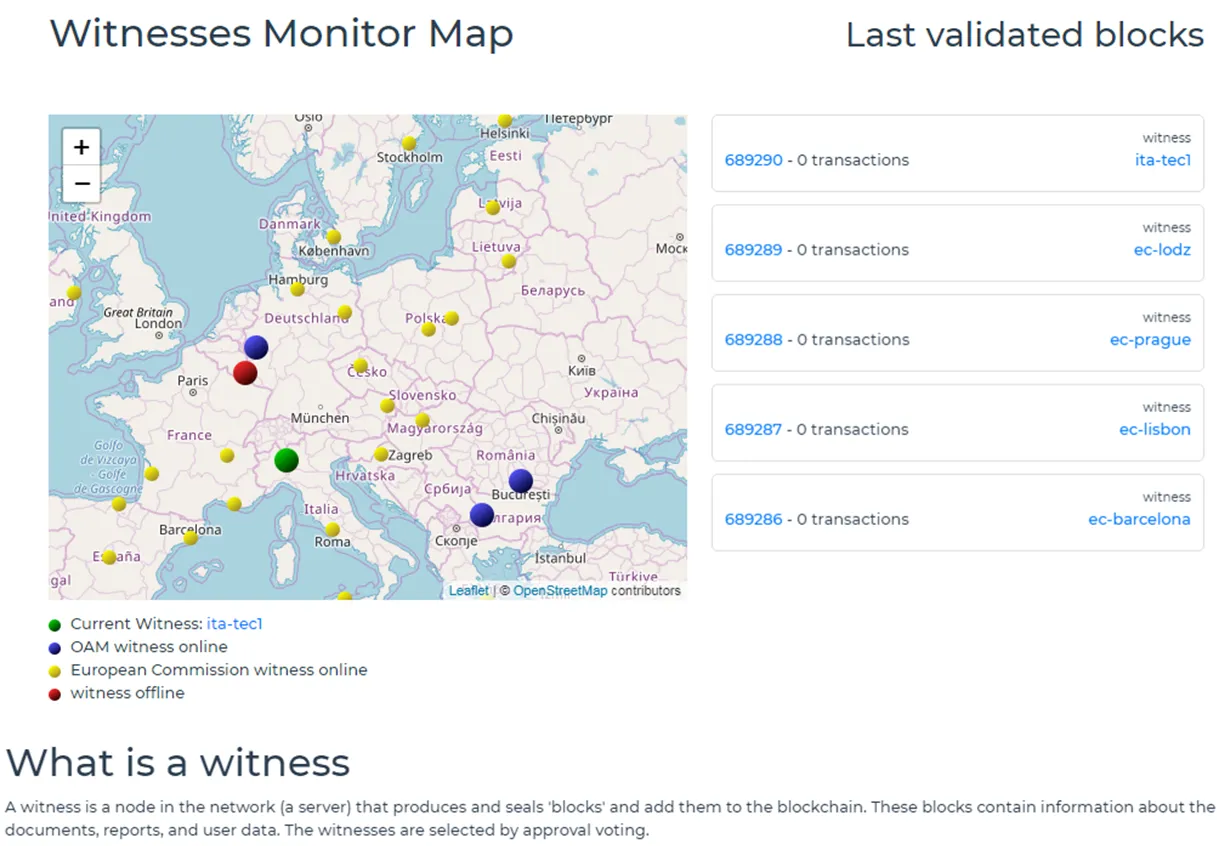
Figure 5. Five National OAMs (Romania, Luxembourg, Germany, Bulgaria, and Italy) have now joined the EC network (small yellow dots) with nodes they themselves control and operate (big dots).
As you can see in Figure 5, as from the beginning of March 2019, five national OAMs have provisioned resources, installed and began running the EFTG pilot software. Currently, Romania (ASF ROMANIA), Luxembourg (Luxembourg Stock Exchange), Bulgaria (Financial Supervision Commission), Germany (Unternehmensregister) and Italy (EMarketStorage) are “live”. They have joined the network (which runs on the open Internet) and are already validating blocks.
Sustainability
Running an instance entails economic costs. The members of the consortium are expected to contribute in good faith to a "common good", a running platform which serves its users.
Since any contributor to the network's resilience can, taken separately, stop incurring operating costs with no immediately visible downside effect on the "common good" (the platform), it may not be economically sound for any of them to contribute actively by running an instance. If each participating entity acts in their best self-interest, the "common good" may end up not being sustainable.
Traditionally, the classical policy tool for tackling this problem has been compulsory regulation.
Blockchain is the first technology which complements and offers an alternative to legal constraint: economic incentives measured and accounted for in a "unit of account", an internal blockchain crypto asset ("token").
In the EFTG project, this mechanism is implemented "out-of-the-box" using steem's features. Such mechanisms have been proven to be robust and secure. It can be said that a solution implemented with our blockchain architecture benefits from a free, built-in "accounting module" for its back-end.
Currently EFTG pilot leverages this extraordinary feature of blockchain technology in the way it keeps track of the contribution of the different OAMs to the resilience and security of the network.
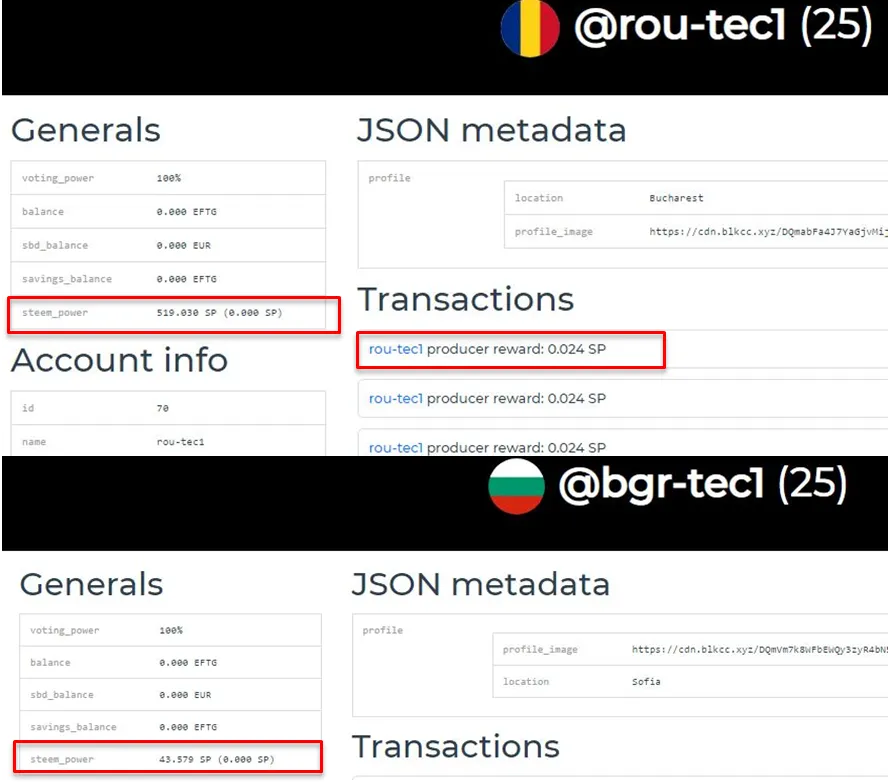
Figure 6. OAMs running witness nodes are rewarded in "SP" each time they sign a block. The blockchain does the accounting for their total number of SP as "steem_power"
As you can see in Figure 6 each time a witness node validates and appends a block, it is rewarded with a token called "SP" (steem_power). As the OAM nodes get to validate one block per minute, the longer an OAM operates a witness node, the more "steem_power" it accumulates, as you can see above for Romania (the first OAM-operated node on-line) and Bulgaria, who joined the network at a later stage.
Thus the tokens system of the blockchain could prove to be a very efficient tool commonly agreed upon and used to monitor the system from a resources perspective.
Reusability
Blockchain being essentially a back-end technology, it has an additional benefit: it can store a variety of data and give access to the stored data to multiple, independent front-end applications.
Indeed, all the images which were used to illustrate this text come from the web interface developed by the Commission. However, as the OAMs gradually take ownership of the platform and of the technical skills involved, each one of them will be able to develop its own front-end application interacting with the common blockchain in novel, programmable ways.
The underlying blockchain is extensible and will be able to serve future OAMs applications, storing and displaying OAM-specific data, independent of the EFTG pilot portal and of each other.
Conclusion
The Commission has legislated to advance financial transparency, thus advancing toward the Capital Markets Union and stimulating investment in Europe. Classical IT architectures appeared to be somewhat limited; they fell short of addressing many legitimate concerns of the participants. In contrast, the EFTG Pilot demonstrated that Distributed Ledger Technologies can naturally address these at reasonable cost.
Through the EFTG pilot, the European Parliament and the European Commission are leading by example and demonstrating in practice how technological innovation can be harnessed for the advancement of the European project.
The selected blockchain technology has displayed unique features which no other technology cumulates:
- Efficiency – the ability to develop more, faster, at a lower cost
- Data control – a trustable link of data ownership
- Resilience – a high level of service for users
- Sustainability – advanced economic mechanisms
- Reusability – support for independent (or "decentralized") applications

I am operating the witness @lux-witness
If you know what witnesses are and agree that people commited to keeping this blockchain ticking play an important role ...

(by simply clicking on the picture - thanks to SteemConnect)
